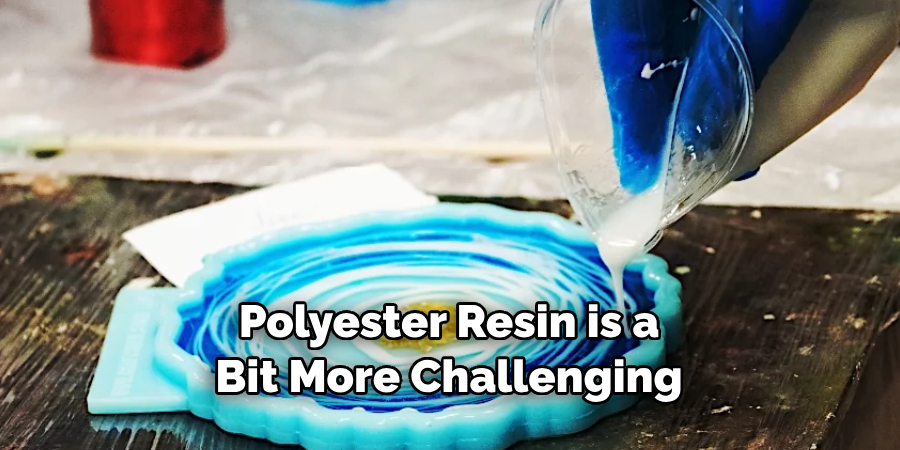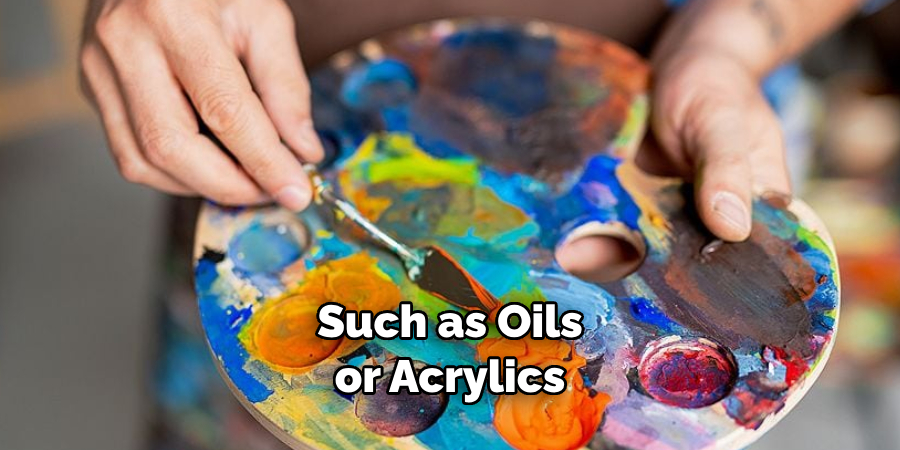Alcohol ink has become a popular medium for creating beautiful, vibrant designs on various surfaces, including resin. It’s a versatile medium that can add depth and character to your resin projects. If you’re new to resin and alcohol ink, don’t worry! We’ve got you covered with our beginner’s guide on how to use alcohol ink in resin.

Can You Use Alcohol Ink in Resin?
Artists and crafters looking to add some unique color to their resin projects may wonder if alcohol ink is a viable option. The answer is yes! Alcohol ink is a popular choice for coloring resin due to its vibrant colors and ability to blend seamlessly. When using alcohol ink in resin, it’s important to use a high-quality resin that won’t turn yellow or become cloudy over time. It’s also recommended to work in a well-ventilated area and wear protection for your eyes, skin, and lungs. With a little care, the possibilities for creating stunning resin pieces with alcohol ink are endless.
Why Should You Use Alcohol Ink in Resin?
Whether you’re a seasoned resin artist or just starting, alcohol ink is worth considering as a pigment medium. It adds a striking pop of color to your resin pieces and creates a unique, organic design as it spreads across the surface. Alcohol ink is incredibly versatile, making gradients and blends or creating a marbled effect. In addition, the colors don’t blend as much as traditional dyes or pigments, allowing for greater control over the final product. Using alcohol ink in resin is a surefire way to create one-of-a-kind pieces that will make a statement in any setting.
How to Use Alcohol Ink in Resin – A Beginner’s Guide
1. Choose Your Alcohol Inks
Alcohol inks come in various colors and brands, so take your time when selecting your inks. Some popular brands of alcohol ink include Ranger, Jacquard, and Tim Holtz. You can purchase them in individual colors or sets. Remember, a little goes a long way, so start with a small assortment of colors.
2. Prep Your Resin
Alcohol ink is best used with clear, high-quality resin. Make sure your resin is properly mixed and degassed before you add any alcohol ink. Follow the manufacturer’s instructions for mixing and pouring your resin, and use a level surface to prevent any spills.
3. Apply the Alcohol Ink
Once your resin is poured, it’s time to add the alcohol ink. Apply a small amount of alcohol ink onto a piece of silicone or directly into the resin mixture. If using multiple colors, apply the colors separately to create distinctive patterns and designs. You can use a toothpick, a brush, or a dropper to create different effects and lines in your design.
4. Blend and Mix
Once you’ve added your alcohol inks, gently blend the colors with a clean toothpick or brush. Be careful not to blend too much, or you’ll end up with a muddy-looking design. Allow the resin to cure according to the manufacturer’s instructions.

5. What to Avoid
Be careful not to add too much alcohol ink, as this can cause cloudiness in the resin. You should also avoid stirring or mixing the alcohol ink with a stir stick, which will introduce air bubbles into your resin and create an uneven finish.
6. Let It Cure
Once you are happy with your design, allow the resin to cure according to the manufacturer’s instructions. It’s important not to disturb or move your resin while it’s curing, as this can cause cracks and bubbles in the finished product.
7. Enjoy Your Creation!
Once your alcohol ink and resin have cured completely, you can enjoy your beautiful creation! Use these techniques to create unique, one-of-a-kind pieces of art and jewelry. With alcohol, ink, and resin, the possibilities are endless!
That’s it! You’ve now learned how to use alcohol ink in resin. With a little practice and experimentation, you’ll be creating stunning pieces of art and jewelry in no time!
5 Considerations Things When You Need to Use Alcohol Ink in Resin
1. The Type of Resin You Use
There are two main types of resin: epoxy resin and polyester resin. Epoxy resin is the most popular resin for crafting, as it is easy to use and dries quickly. However, epoxy resin is not compatible with alcohol ink, so you will need to use polyester resin instead. Polyester resin is a bit more challenging, but it will allow you to create beautiful projects with alcohol ink.

2. The Type of Alcohol Ink You Use
There are two main types of alcohol ink: dye-based and pigment-based. Dye-based ink is thinner and flows more easily, making it ideal for creating delicate designs. Pigment-based ink is thicker and more opaque, better suited for bolder designs.
3. The Amount of Ink You Use
When using alcohol ink in resin, it is important to use the right amount. If you use too much ink, your project will be too dark; if you use too little ink, your project will be too light. Experiment with different amounts of ink until you find the perfect balance for your project.
4. The Type of Surface You Use
When working with alcohol ink and resin, you can use a variety of surfaces. However, some surfaces are better than others. For example, non-porous surfaces such as glass or metal allow ink to flow more freely and create smoother designs. Porous surfaces such as wood or paper will absorb some of the ink, resulting in more textured designs.
5. The Cure Time
After you have completed your project, you will need to wait for the resin to cure before displaying it or using it. The cure time will vary depending on the type of resin you use and the conditions you cure it (e.g., temperature and humidity). Generally speaking, epoxy resin takes 24 hours to cure, while polyester resin takes 72 hours to cure.
5 Benefits of Using Alcohol Ink in Resin
1. Vibrant Colors
Alcohol inks are available in a wide range of colors and can produce some very vibrant results when used in resin. If you’re looking for a way to add some bright and bold colors to your resin projects, alcohol inks are a great option.
2. Easy to Use
Alcohol inks are also very easy to use. You can add a few drops of ink to your resin and mix it until you achieve the desired color. There’s no need to measure exact amounts or mix multiple colors to achieve the right shade.
3. Can Be Mixed with Other Mediums
In addition to mixing alcohol inks with resin, you can also mix them with other mediums, such as oils or acrylics. This allows you to create unique colors and effects you couldn’t achieve with just one medium.

4. Durable
When used in resin, alcohol inks are also very durable. Resin is a strong and sturdy material; adding alcohol inks will not make it any less so. Your finished project will withstand wear and tear without the colors fading or running.
5. Versatile
Alcohol inks can be used for various projects, from jewelry to coasters and everything in between. If you can think of it, you can make it with alcohol, ink, and resin!
5 Common Mistakes People Make When Trying to Use Alcohol Ink in Resin
1. Not Thoroughly Mixing the Ink and Resin.
This is probably the most common mistake when using alcohol ink in resin. If you don’t mix the two substances thoroughly, you’ll have streaks or ink clumps in your resin. Mix the ink and resin well before adding it to your mold to avoid this.
2. Adding Too Much or Too Little Ink.
Another common mistake is adding too much or too little ink to the resin. Adding too much ink will make the colors dark and intense. Adding too little ink will make the colors very light and subtle. It’s important to find a balance that you’re happy with.
3. Not Using Enough Heat.
When working with alcohol ink and resin, it’s important to use enough heat. Otherwise, the ink will start to evaporate and will not be as vibrant. We recommend using a heat gun on low heat or a hair dryer on high heat. Hold the heat source about 6 inches away from the surface of the resin and move it around until the desired effect is achieved.
4. Not Curing the Resin Properly.
Curing resin is an important step that should not be overlooked. If you don’t cure the resin properly, it will remain sticky and will not harden correctly. Be sure to follow the instructions on your specific brand of resin and cure it for the recommended amount of time.
5. Not Protecting Your Work Surface.
Lastly, be sure to protect your work surface when working with alcohol ink and resin. Resin can be messy and difficult to clean up, so it’s best to use a disposable surface such as wax or parchment paper. Alcohol ink can also stain surfaces, so it’s best to use a protective barrier between your work surface and the ink.

Conclusion
Alcohol ink has become popular among resin artists for its versatility and vibrancy. Following these steps, you can create stunning resin pieces with unique and colorful designs. Don’t be afraid to experiment with different techniques and blends; alcohol ink offers endless possibilities for creating beautiful art. With a little practice and patience, you can become an alcohol ink pro quickly! Thanks for reading our post about how to use alcohol ink in resin.

